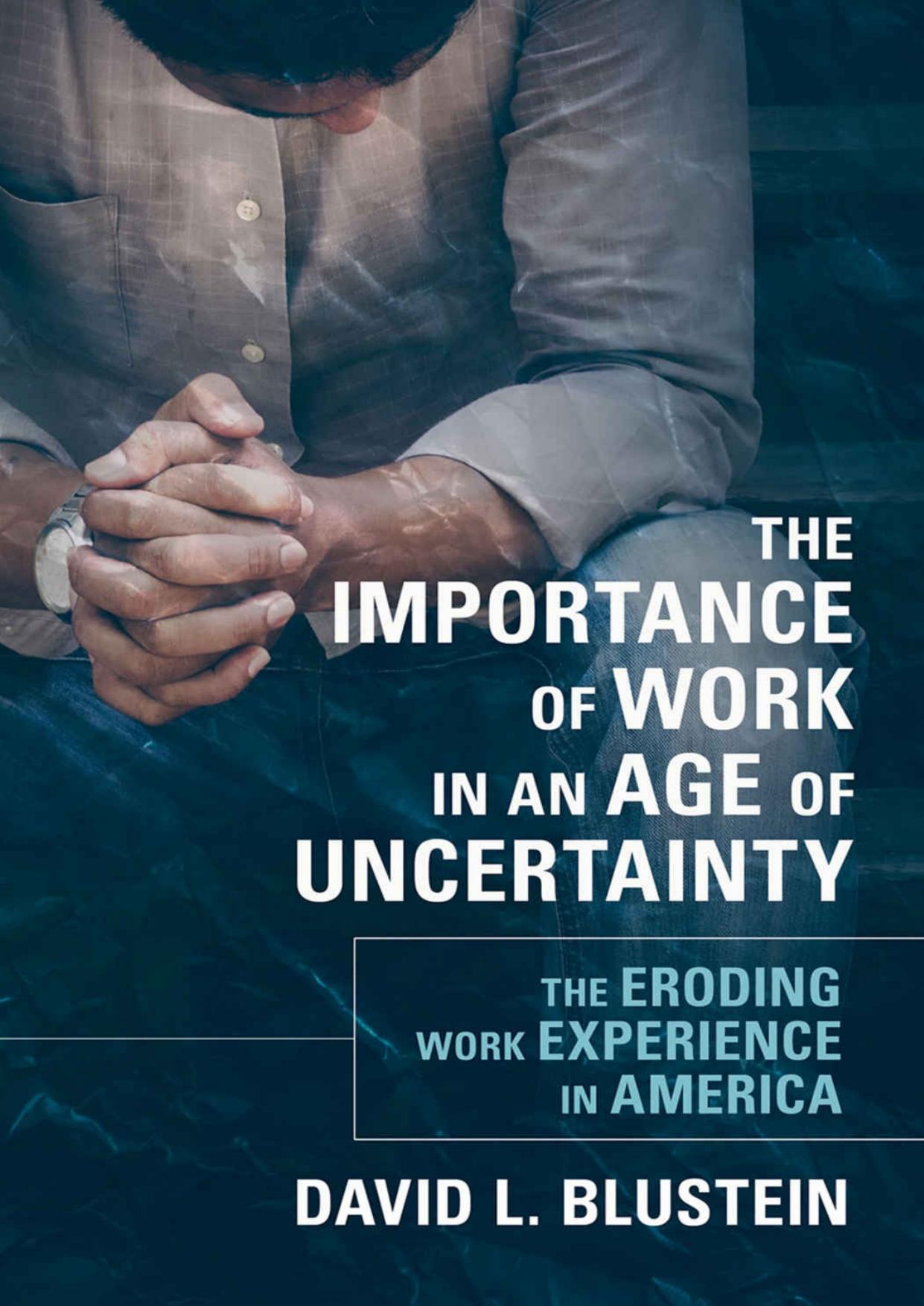The Importance of Work in an Age of Uncertainty by David L. Blustein

Author:David L. Blustein
Language: eng
Format: epub, pdf
Publisher: Oxford University Press
Published: 2019-03-04T16:00:00+00:00
7
Being Able to Work Without Oppression and Harassment
The Boston Public Schools (BPS) system is a storied school district that includes some of the most prestigious high schools in the United States. For example, Boston Latin High School, an examination school (i.e., students compete for positions via a comprehensive test), has alumni that include eight governors of Massachusetts and four presidents of Harvard University, among other notables.1 However, many of the high schools in BPS currently struggle to educate students who are confronted with poverty, poor housing conditions, and other social and economic barriers. Most of the high schools do not require an examination for entering students and are open to any and all students. These schools were the ones that I found compelling and that I turned my attention to when I moved to join the counseling psychology faculty at Boston College in 1999 after 14 years at the University at Albany. At that point in my life, I was eager to enact my passion for those on the margins by designing a career development program tailored for high school students from poor urban communities. My colleagues and I, working closely with professionals from BPS, developed a career development intervention (called Tools for Tomorrow) to pilot in a few of the more challenged schools in the BPS system. To ensure that I, as one of the developers of this program, would have an empathic connection to the process of delivering our curriculum, I committed to teaching a section within the ninth-grade cohort. A particular incident in this class provides a powerful introduction to this chapter, which focuses on how work interfaces with marginalization and oppression.
I walked into my assigned high school class one Wednesday with handouts of an exercise that we had developed called “What Is Work?” This exercise was designed to help students understand the broader personal and historical terrain of work. We asked the students to define work and career and also to reflect on how their families and communities defined these terms. I then followed this exercise with a career and work timeline; we asked the students to speculate about the most common occupations in 1900, 1950, currently (2000 at the time), and 2050. The goal of this exercise was to help the students internalize how much the world of work has changed and to relate to education as a means of enhancing their options in life. Nearly all of the students in the class were of color; most were Latino, African American, or Caribbean American, and many were either immigrants themselves or the children of immigrants, often living in the poorest neighborhoods in Boston.
During the exercise, I asked the students to call out occupations for each of the aforementioned time periods, which I then wrote on the blackboard. As we got to the present era, a student called out doctor and another called lawyer. At that point, a student then chimed in that these jobs “are available only if you’re White.” This comment silenced the class.
Download
The Importance of Work in an Age of Uncertainty by David L. Blustein.pdf
This site does not store any files on its server. We only index and link to content provided by other sites. Please contact the content providers to delete copyright contents if any and email us, we'll remove relevant links or contents immediately.
Rewire Your Anxious Brain by Catherine M. Pittman(18484)
Talking to Strangers by Malcolm Gladwell(13127)
The Art of Thinking Clearly by Rolf Dobelli(10130)
Mindhunter: Inside the FBI's Elite Serial Crime Unit by John E. Douglas & Mark Olshaker(9098)
Becoming Supernatural by Dr. Joe Dispenza(8033)
Change Your Questions, Change Your Life by Marilee Adams(7555)
The Road Less Traveled by M. Scott Peck(7469)
Nudge - Improving Decisions about Health, Wealth, and Happiness by Thaler Sunstein(7454)
The Lost Art of Listening by Michael P. Nichols(7356)
Mastermind: How to Think Like Sherlock Holmes by Maria Konnikova(7153)
Enlightenment Now: The Case for Reason, Science, Humanism, and Progress by Steven Pinker(7081)
Win Bigly by Scott Adams(7030)
The Way of Zen by Alan W. Watts(6447)
Daring Greatly by Brene Brown(6364)
Big Magic: Creative Living Beyond Fear by Elizabeth Gilbert(5550)
Grit by Angela Duckworth(5445)
Ego Is the Enemy by Ryan Holiday(5220)
Men In Love by Nancy Friday(5108)
Altered Sensations by David Pantalony(5000)
